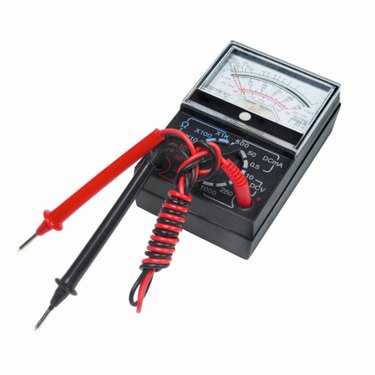Things You'll Need
Battery charger
Pen and paper
Multimeter
Battery load-tester

Maintenance-free deep cycle batteries are used to power golf carts, wheelchairs and other items that need a constant supply of voltage to operate. They are also used in marine vessels to ensure that while a vessel is moored, there is enough electrical power until the next time the engine is turned. The cells in maintenance-free deep cycle batteries can be sealed flooded, gel or absorbed glass mat (AGM); unlike unsealed batteries, you don't need to top off the fluid level or test the specific gravity. However, you do need to occasionally test the output voltage and the amperes to make sure your maintenance-free deep cycle battery is in good condition.
Step 1
Charge your battery until it's fully charged using the appropriate charger for the type of maintenance-free deep cycle battery you have. Sealed flooded cell and AGM batteries can be charged with a regular car battery charger, but gel batteries are best charged by a gel battery charger; overcharging a gel battery can damage it.
Step 2
Use some energy from the deep cycle battery for a short time to help stabilize the voltage. Turn on electrical items, such as lights, for about 10 minutes, but don't turn on powerful energy draining equipment or motorized items.
Step 3
Look at the deep cycle battery label and note the voltage and ampere ratings. The voltage is most likely to be 12 volts, but the amperes can vary significantly depending on the type of battery. The ampere figure is prefixed with the letters CCA, meaning cold cranking amps.
Step 4
Set your multimeter to measure voltage. Place the metal tips on the end of the two colored multimeter wires onto the deep cycle battery terminals. The red handled tip goes to the positive terminal labeled "+" while the black handled tip goes to the negative terminal labeled "-."
Step 5
Read the multimeter. A 12-volt deep cycle battery in good condition has a reading of between 12.4 and 12.7 volts; consider a replacement battery if the reading is lower than 12.4 volts. A 6-volt battery in good condition will read between 6.2 and 6.3 volts.
Step 6
Calculate the load-test amperes. Divide the CCA figure by 2. For example, if the CCA is 50, divide 50 by 2 to get 25. The result is the test result you will get with a load-tester if your battery is in good condition.
Step 7
Place the prongs on the end of the colored wires from your load-tester onto the deep cycle battery terminals as you did using the multimeter, but put them on simultaneously and be prepared to start counting 15 seconds using a wrist watch or a stopwatch.
Step 8
Read the load-tester after 15 seconds. If you feel you didn't test it correctly, repeat the test. The load-tester should display the figure you calculated earlier if the battery is in good condition. If the load-test ampere measurement is lower than this figure by more than 10 percent, consider a replacement deep cycle battery.